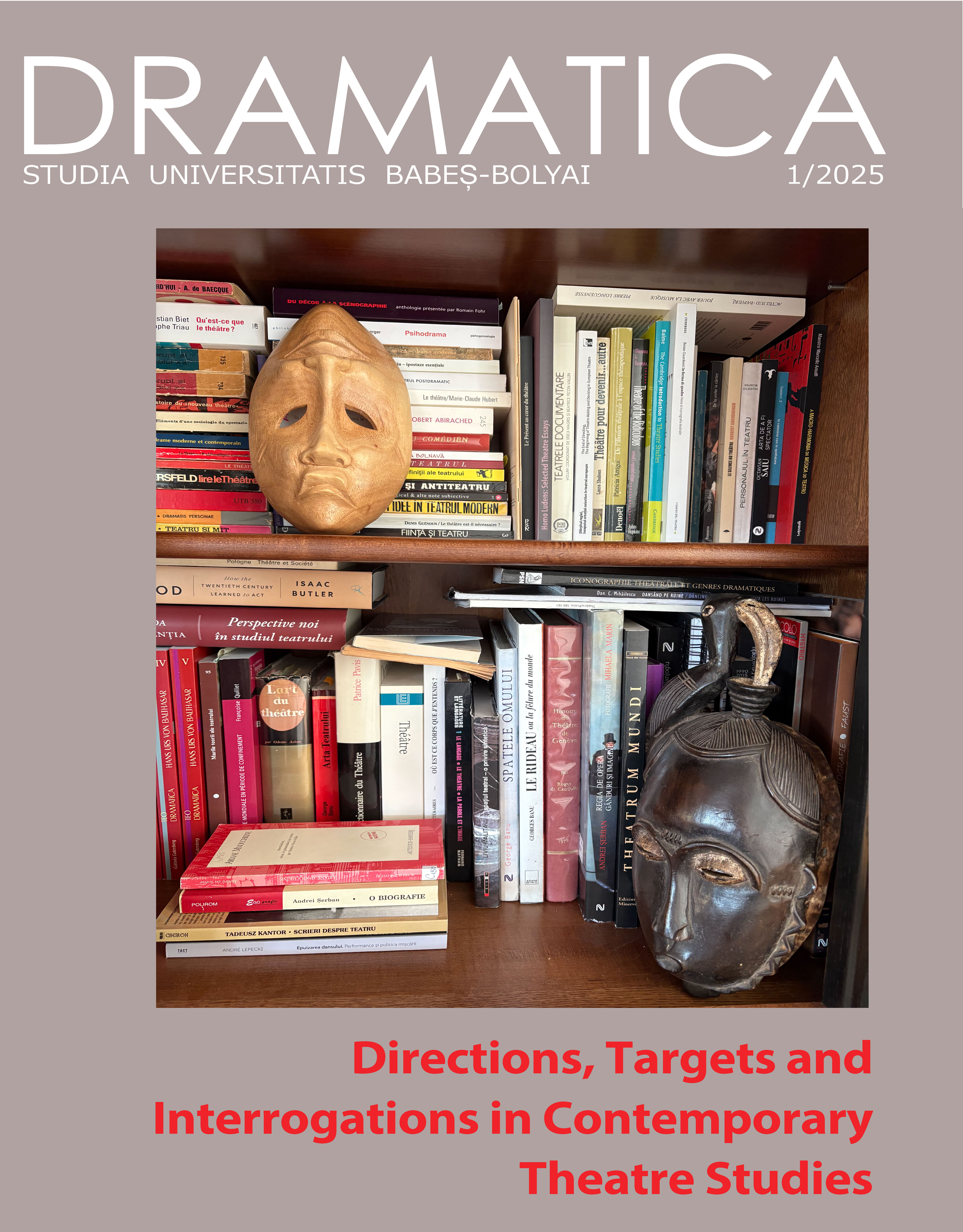Independent Dance in Cluj-Napoca: Organizational Strategies and Audience Dynamics
DOI:
https://doi.org/10.24193/subbdrama.2025.1.05Keywords:
independent dance, cultural management, audience engagement, Cluj-Napoca, sustainability, cultural participation, dance studios, community artsAbstract
With two primary research questions in mind, this study investigates Cluj-Napoca’s independent dance culture: “How do available resources (human, financial, and logistical) influence the organization and operational strategies of dance studios?” and “How aware, interested, and involved is Cluj’s audience, and what influences their behaviour as public or students?” The study reveals a varied but vulnerable sector through a questionnaire with 85 respondents and four interviews with cultural dance space managers. Sustainability is impacted by several factors, including a lack of consistent resources, difficulties with promoting the opportunities, lack of support from the local administration, and the strain of operating in uncertain and unpredictable circumstances. Every studio operates using its own flexible structure, and there is no set organisational model. Even though there is public interest, low visibility and restricted information available continue to be major obstacles to wider involvement. The results highlight the necessity of better coordination among cultural actors and more support from local authorities. The dance scene in Cluj-Napoca may have a more sustainable future if these ties are strengthened.
References
Braniște, Miki. Creativitatea-marfă: O perspectivă din interiorul scenei culturale independente clujene 2009-2019 [Creativity as a Commodity: An Inside Perspective on the Cluj Independent Cultural Scene 2009-2019]. Cluj-Napoca: Idea Design & Print, 2021.
Cameron, Kim S., and Robert E. Quinn. Diagnosing and Changing Organizational Culture: Based on the Competing Values Framework. San Francisco: Jossey-Bass, 2005.
Croitoru, Carmen, and Ștefania Matei. Barometrul de Consum Cultural 2023: Comunități de consum în contextul schimbărilor societale [The 2023 Cultural Consumption Barometer: Consumer Communities in the Context of Societal Changes]. Bucharest: Editura Universul Academic, 2023.
Daigle, Pascale, and Linda Rouleau. “Strategic Plans in Arts Organizations: A Tool of Compromise Between Artistic and Managerial Values.” International Journal of Arts Management 12, no. 3 (2010): 13-30, http://www.jstor.org/stable/41065025. Accessed on April 10, 2025.
Handy, Charles B. Understanding Organizations. London: Penguin, 1986.
Ianegic, Raluca. “Indicibila devenire: Interviu cu doamna Miriam Răducanu” [“Indescribable Becoming: Interview with Mrs. Miriam Răducanu”]. Cultura 6, UNATC, 2013, https://www.scribd.com/document/182567942/32-Raluca-Ianegic-Indicibila-devenire-interviu-cu-doamna-Miriam-R%C4%83ducanu-C6-pdf. Accessed on April 5, 2025.
Kurath Prokosch, Gertrude. “Panorama of Dance Ethnology.” Current Anthropology 1, no. 3 (1960): 233-254, https://www.jstor.org/stable/2739713. Accessed on March 15, 2025.
Layson, June. “Historical Perspectives in the Study of Dance.” In Dance History: An Introduction, edited by Janet Adshead-Lansdale and June Layson, 2nd ed. London: Routledge, 1994.
Lepecki, André. Epuizarea dansului: Performance și politica mișcării. Translated by Cristina Petrescu. Cluj-Napoca: Editura Tact, 2020.
STEEZY Editorial Team. “What is ‘Urban Dance’”. STEEZY Blog, https://www.steezy.co/posts/what-is-urban-dance. Accesed on March 1, 2025.
Downloads
Published
How to Cite
Issue
Section
License
Copyright (c) 2025 Studia Universitatis Babeș-Bolyai Dramatica

This work is licensed under a Creative Commons Attribution-NonCommercial-NoDerivatives 4.0 International License.


